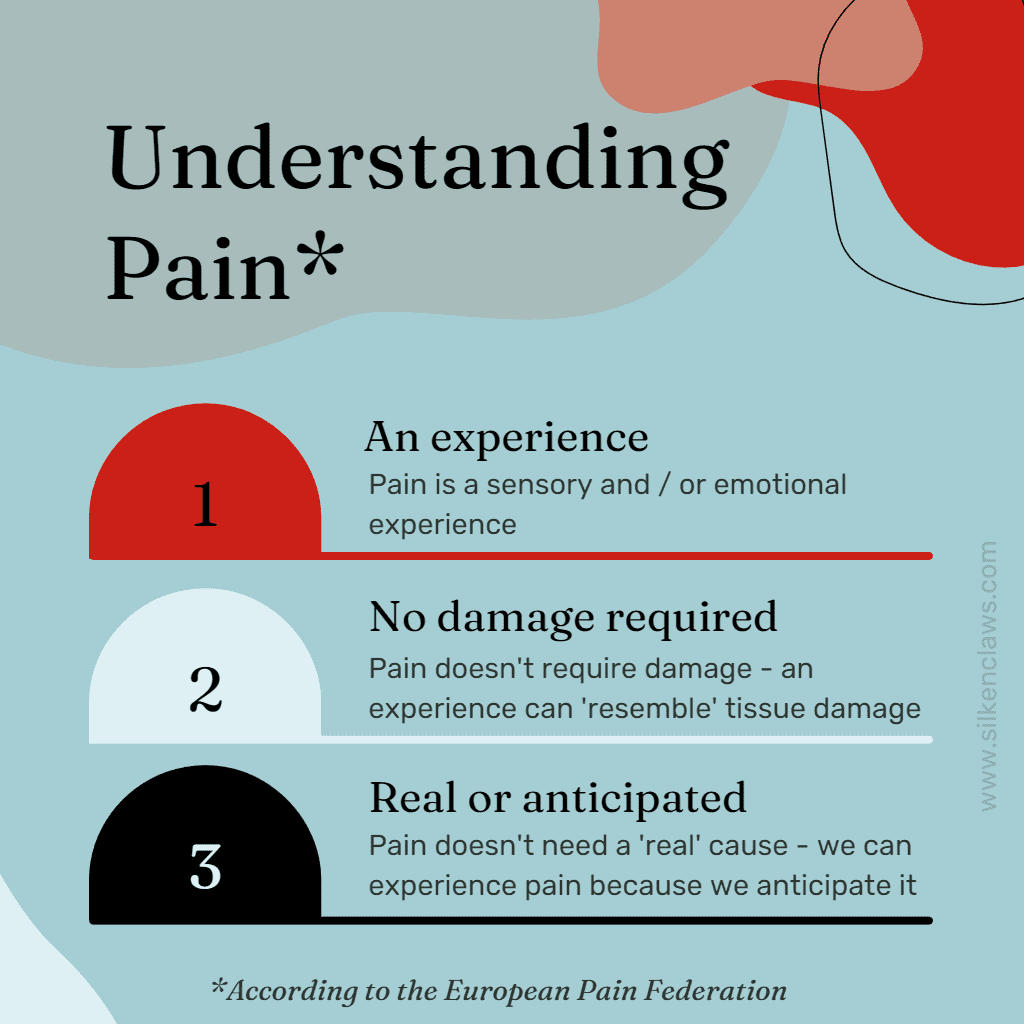
Coming to terms with the fact you’re a sadist can be a tricky thing. Chiefly because sadism is so often so dramatically misunderstood. Which is unsurprising, given how little it is discussed.
Sadism – a misunderstood concept
Honestly, I think if more people had a functional understanding of sadism (and masochism for that matter), it would be part of the popular discussion far more often, because sadism (and masochism) are far more pervasive than people think. It’s just that for the most part, people find expression for both in socially acceptable ways. But that’s a matter for a post to come.
What I have noticed is that frequently, any discussion of sadism is hobbled right out of the gate by a fundamental misunderstanding of what it actually means. Today, I wanted to tackle one of the most common barriers to an open and calm discussion of sadism – the confusion between hurt and harm.
To hurt someone means to cause pain. So, to unpack that, in an appropriately sadistic spirit, let’s start with pain.
What is pain?
According to the European Pain Federation, pain is ‘an unpleasant sensory and / or emotional experience associated with, or resembling that associated with, actual or potential tissue damage.’
So, why bring up this definition? Well, because it tells us three key things.
Pain is a sensory and emotional experience
Firstly, it acknowledges pain is a sensory and / or emotional experience – it’s not as simple as a physical input resulting in a sensory output. It is a complex thing. And there is in fact a wealth of research indicating the power of the human mind on how we experience and process pain and how our attitude affects how much things hurt – the placebo effect is a good example.
Pain doesn’t require physical tissue damage
Secondly, it acknowledges that pain doesn’t have to be caused by actual physical tissue damage – it’s a sensation which can resemble actual or potential tissue damage. If you think about it, people often relate emotional pain to physical damage, even if they have not experienced that damage before – eg ‘I felt as if I had been punched in the gut’, ‘I felt like I had been stabbed’, and so on.
Damage can be just potential – ie anticipated
Thirdly, it acknowledges the damage may be actual or just potential. We can have the sensory / emotional experience that is pain without anything happening at all – we just have to anticipate that something will happen.

What is harm?
If we take the Britannica Encyclopaedia definition of harm, harm is ‘physical or mental damage or injury: something that causes someone or something to be hurt, broken, made less valuable or successful, etc.’
So, in short, pain is a human experience which can be induced and influenced by a number of physical, mental, and emotional factors. Harm refers to mental or physical damage.
Therefore, pain does not automatically mean harm.
Harm means to fundamentally impair of function or value. To harm means to detract from something, to make it lesser.
But the mere experience of pain does not automatically make something less. It does not automatically detract. It’s just an experience which may or may not be associated with damage.
In fact, the idea that the unpleasant sensory experience is not something to be automatically shunned isn’t unique to the kink community. Take your average Cross Fit fanatic, or a spin class instructor yelling everyone should ‘feel the burn’. There are many unpleasant experiences in life that, if avoided, will detract from it. Pain does not automatically mean we should stop.
So, in short to hurt someone – that is, inflict pain – does not automatically mean to cause harm.
In fact, as in the definition above, it’s entirely possible to induce the experience of pain with merely the potential of tissue damage. And even if we are talking about actual tissue damage, as we in kink often do, that falls short of the mark of meeting the definition of harm.
So, to be a sadist is to enjoy hurting, not harming.
But when people imagine sadists, they automatically think of someone revelling in gore and violence. In harming someone. But that’s just not true – sadism just refers to the enjoyment derived from watching someone else be subject to said unpleasant sensation.
Now, that’s not to say there aren’t people, or even sadists, out there who are capable of enjoying hurt while they are knowingly harming someone. But I think that isn’t the vast majority of sadists. And to explain why, I need to tackle the next common hurdle we run into in discussing sadism.
Even if people can wrap their heads around the fact the inflicting pain does not mean violence or damage, they then jump to ‘okay well that means you must enjoy watching someone break their leg’ or a similarly stupid thing.
So, let’s talk about how sadistic enjoyment works.
Sadism is predicated on empathy. Fundamentally, you can’t enjoy watching someone experience something if you don’t understand it.
Which means, by definition, to derive sadistic enjoyment, you need to be focused on someone else.
To which end, I think there can’t be very much in the way. And if you are focused on your own feelings, you are not focused on someone else’s, which means you can’t be enjoying them. It would follow you can’t enjoy something if you’re not paying attention to it, right?
‘But people enjoy hurting people while in all kinds of emotional states’, you might say. ‘People enjoying hurting other people when they’re not focused on the other person at all.’
Yes, but here’s the thing – just because someone is intentionally hurting someone else and seems to be having a grand old time doesn’t automatically mean they are deriving sadistic enjoyment from it.
Humans have been inflicting pain on each other for a long, long list of reasons since we really began as a species. The thing is, that’s not because we automatically enjoy the sight of other people in pain.
People like seeing someone else get hurt because it fulfils an idea of justice, or because they want to feel powerful. Because they want to denigrate someone else or because they just lose control of their emotions. Out of a sense of morbid curiosity or to feel a sense of ‘thank god that’s not me’. And that’s just a handful of reasons from a very, very long list.
None of which are very pleasant or say particularly great things about unmoderated human nature. But, nonetheless, none of which could reasonably be described as enjoyment.
Don’t get me wrong – that’s not to say that inflicting pain on someone does not carry with it the risk of harm, but all kink requires risk management. And certainly, if you intentionally inflict pain without consent and / or regard for the other person’s wellbeing, you need to drastically and urgently revaluate your life choices.
But I am writing this because I think plenty of lovely, absolutely fabulous human beings who have struggled to come to terms with their own sadistic inclinations because their entire reference point for sadism is this idea mixed in with violence and harm. Because sadism is so mixed up with harm in their mind that because they enjoy hurting someone, they must enjoy harm.
Which is why I think it’s ever so important to untangle sadism from all the other many, many reasons people chose to inflict pain on each other.
Being a sadist does not automatically make you the kind of person who harms others
Don’t get me wrong – as with everything around kink, risks must be managed carefully and appropriately and any exercise of sadism must be practiced with informed consent. But most people coming to terms with their sadistic inclinations that I have spoken to over the years have been absolutely and excessively terrified of what they might do.
I can entirely understand why. However, although being careful and considerate is vital, it is also important to remember being a sadist does not automatically make you a bad person. It does not automatically make you the kind of person who will disregard boundaries, who will be cruel and unkind to the world at large, who will harm people.
To be a sadist just means you have the ability to derive enjoyment from observing or inflicting pain. Just like having a sense of humour means you have the ability to find something funny. It doesn’t mean that you automatically will, regardless of context, derive enjoyment from pain regardless of other people’s feelings and the wider implications.
And of course, there are sadists out there, people who do have the capacity to enjoy pain and are the kind of people who will cause harm. But that’s not because they’re sadists. That’s just because they’re not very nice people, and the two are not intrinsically linked.
So, in short…
Hurt and harm are separate concepts, and to be a sadist refers merely to having the capacity to enjoy pain. Having the ability to enjoy it doesn’t mean you are in any way shape or form more prone to causing harm – failing to be aware of the risks, be considerate of other people’s feelings and boundaries, and things of that nature are far better predictors of that.
So, if you’re a sadist, embrace it, you fabulous kinky radish. There’s a masochist out there who’s as keen for you to do all manner of sadistic things to them just as you are keen to do them. Just be considerate, be risk-aware, practice with informed consent, and a fabulous time should be had by all.





Hadrian Temple says:
Excellent discussion, and spot on!
Miss Rosalie says:
Thanks for reading! I appreciate the feedback
Super Smash Cache says:
I love this breakdown! Gonna be digesting it for a while, since so many sadists have grown up thinking they were monsters before discovering the concept of sadism.
Miss Rosalie says:
Thanks! I really want to make it easier for sadists to figure it out and make it less of a taboo. It’s not a inherently bad thing! I think sadism is so much more prevalent than people think (as is masochism) and plenty of (especially) vanilla people satisfy the instinct in very unhealthy ways. Whereas there’s no need – masochists exist and have the mirrored need to be hurt!